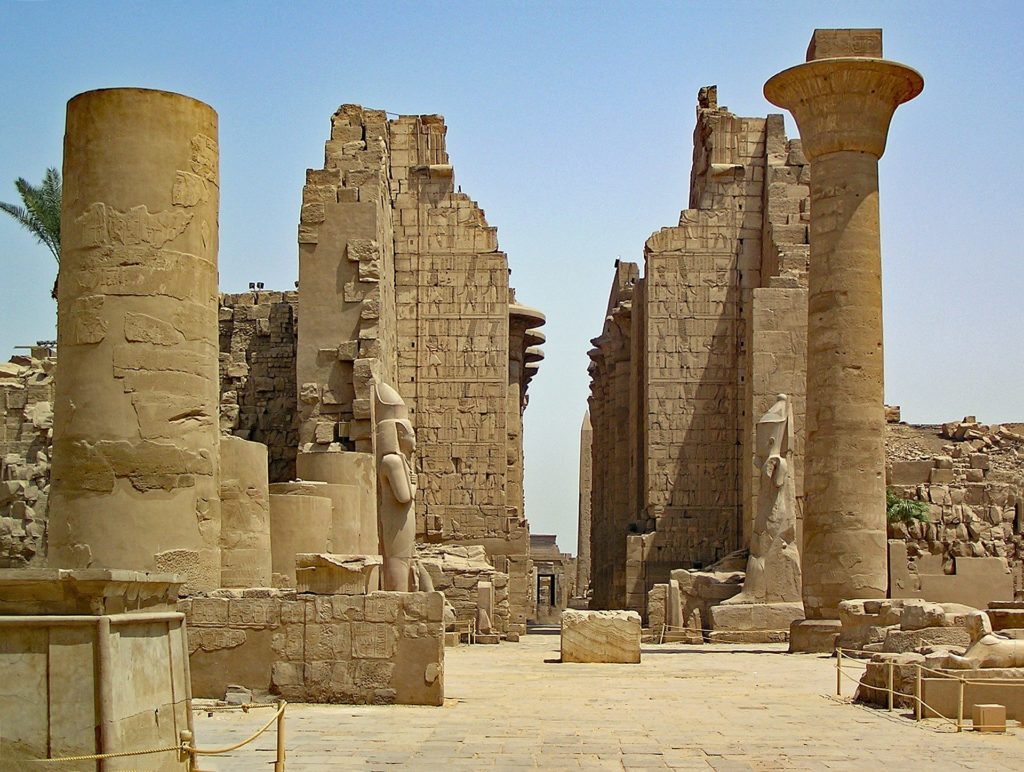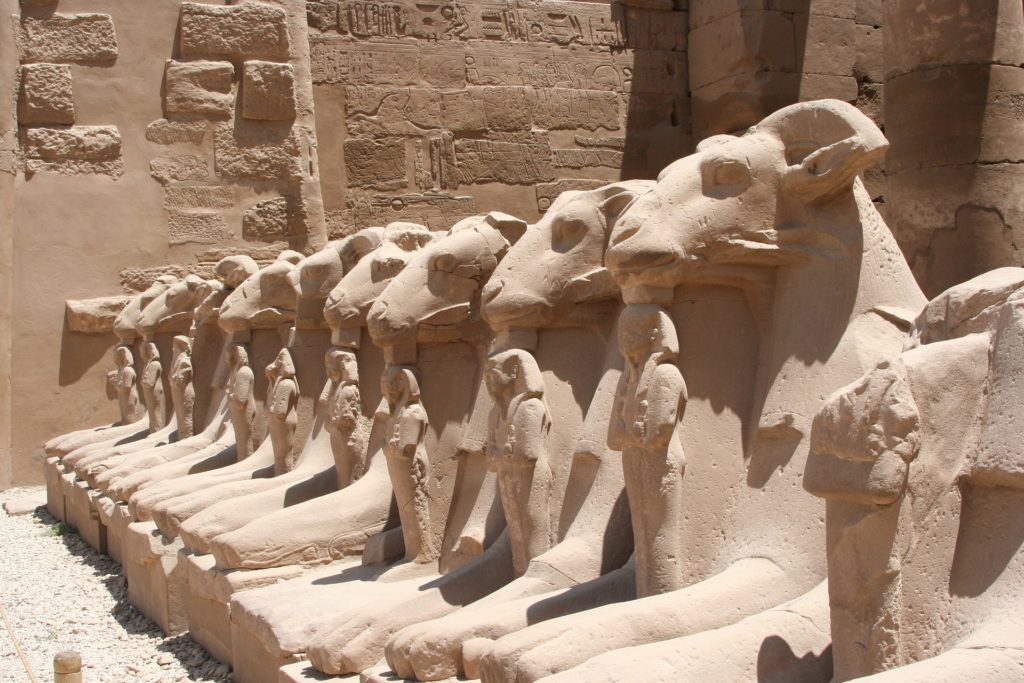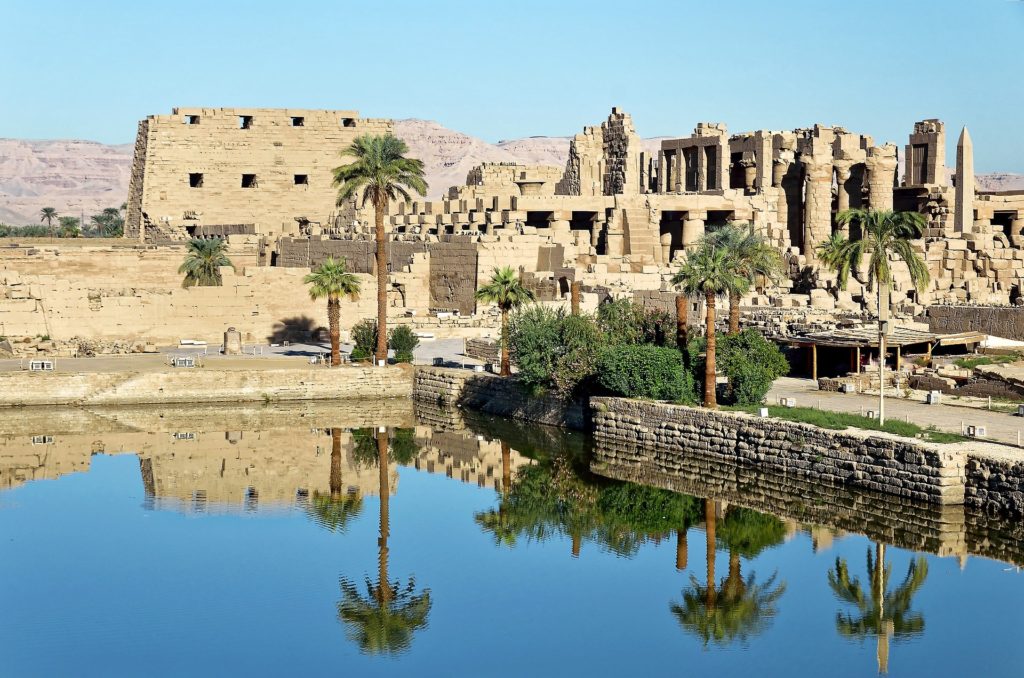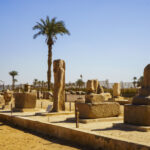Immerse yourself in the Complex of Karnak Temple

The Karnak Temple Complex is one of the most remarkable vestiges of Ancient Egypt’s immense architectural and cultural achievements. With three main precincts within the complex, Karnak is comprised of temples, chapels, obelisks, and a range of other buildings. Given that the oldest part of the complex dates back to 2055 BC, the definition of many of the remaining structures is impressive. Most of Ancient Egypt’s most important pharaohs added to the complex over the years, and this is why Karnak is the second most popular tourist spot in Egypt (after the Pyramids of Giza).
People have written books about the intricate history and architecture of Karnak, but that’s not our job; as trained, passionate Egypt tour guides, we’d like to inspire people considering visiting this incredible place. We’d like to give you an introduction to the Karnak Temple Complex, offering a little background and telling you what to look out for when you visit. If anything in this guide inspires you, we can build you a personalised Egypt tour, so click to find out more.
A Great First Impression: the Avenue of Sphinxes


Unless you sneak around the back, you’ll enter Karnak via the Avenue of Sphinxes. This battalion of ram-headed sphinxes is guaranteed to impress. These two lines of sphinxes used to run the entire way from Karnak to the Luxor Temple, but even in their reduced state, there are more ancient sphinxes here than you’ve probably ever seen. From here, there are several routes you can take through the complex, and this will depend on your tour guide.
The Incredible Condition of the Great Temple of Amun
Thankfully, the star of the show at Karnak is in remarkable condition. The Great Temple of Amun was originally built in 1630 BC, and many pharaohs over the centuries added to the temple. However, what remains today can be mostly credited to Pharaoh Tuthmosis I. Tuthmosis I made Thebes the capital city of the New Kingdom and, as such, saw the need to put a lot of resources into expanding the original, more modest, temple. The huge statues framing the main room are impressive even now, so imagine how they must have looked in their heyday!
The Temple of Ptah
This temple lacks some of the grandeur of the Great Temple of Amun, but it is still incredible — especially with regard to the detailed hieroglyphics on its columns. This is the perfect spot for anyone who likes to get up close and admire the writings and artwork from people 35 centuries ago. While the early Temple of Ptah was built in the 18th century BC, it was Thutmose III in the 15th century BC who added many of the temple’s most impressive details and features.
Truly Ancient Artwork: The Kiosk of Sesostris
Even though it’s one of the oldest parts of the entire Karnak Temple Complex, the Kiosk of Sesostris is in remarkable condition. This perfect little limestone building has some of the most impressive hieroglyphics you’ll find anywhere in Egypt. There is also something charming about the modest structure of the kiosk within the context of the otherwise ostentatious Karnak structures.
The Temple of Ramses II
The Temple of Ramses II can be found to the east of The Great Temple of Amun. While not as well preserved as its grand neighbour, this temple still boasts some of the most impressive ancient statues. Ramses II is widely regarded to be Egypt’s most successful pharaoh, and we have a glimpse of his prior majesty in the remains of this ancient temple. Nearby, you’ll find the Temple of Osiris, built by Osorkon III and Takelothis III — who co-ruled Egypt as a father-and-son team. There are a number of small chapels nearby in various states of preservation and disrepair. It’s often just as interesting to notice the crumbled structures as it is to admire the preserved ones. Just imagine this entire complex in its prime!
Karnak’s Sacred Lake


To the south of the Temple of Ramses II, you’ll find the Sacred Lake. There’s something striking about this pristine body of water in the otherwise dry and timeworn limestone. There are various structures along the edge of the Sacred Lake, but the star of the show is a large stone scarab beetle dedicated to the sun god Atum-Khepri who was historically represented as a scarab. The Sacred Lake’s waters are so calm and tranquil that the surface serves as a blue mirror for the palm trees and the Obelisk of Queen Hapshetsut that stands tall nearby, after almost 3,500 years…
The Obelisk(s) of Queen Hatshepsut
This spectacular standing obelisk of Queen Hatshepsut is actually one of four that were originally built out of single sections of rock and erected throughout the temple complex. However, only two obelisks remain here; one still stands and the other lies elsewhere in the complex. For many, the standing obelisk is the most impressive and imposing structure in the entire complex. The history behind the obelisks is fascinating as they were the first things the famous female pharaoh Hatshepsut built after her father Tuthmosis I died and she declared herself pharaoh. Mindful that critics might see her grand obelisks as boastful, the pharaoh wrote:
“I acted for him with a straightforward heart, as a king does for any god…Let not anyone who hears this say it is boasting which I have said, but rather say, ‘How like her it is, she who is truthful to her father.’ The god knows it in me [namely] Amun, Lord of the Thrones of the Two Lands…I am his daughter in very truth, who glorifies him.”
The standing obelisk stands 97 feet tall and is guaranteed to impress even the most seasoned traveller.There are, of course, many other structures we could talk about in the vast Karnak Temple Structure, but we wanted to give you some of the highlights and to hopefully whet your appetite for the historical, cultural, and architectural riches this site has to offer. If you’re coming to Egypt to bask in the glory of the most impressive and mysterious ancient civilisation on Earth, then you have to add Karnak to your itinerary. Our biggest tour, a 15-day Luxury Agatha Christie tour of Egypt, takes guests to Karnak on the 13th day, and our trained local guide will ensure you experience the best this incredible complex has to offer. If you have any questions about our Agatha Christie Tours of Egypt or about the Karnak Temple Complex in general, please don’t hesitate to get in touch.


